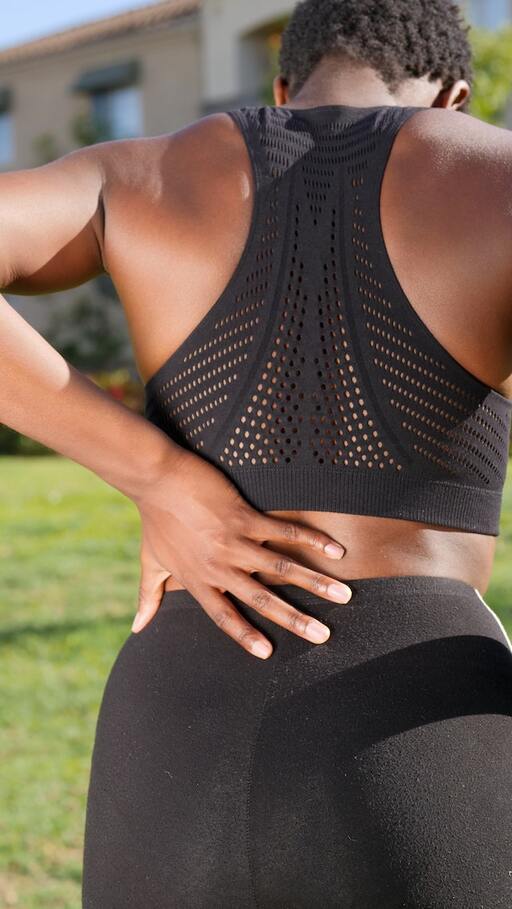Lumbar Disc Herniation: Is It That Common?
According to the past 20 years’ statistics, back pain in general has been the most common cause of disability in London and the UK.
Research shows that it is still considered so until date. [1]
- Has your lower back pain created a “NO GO LIST” of things you cannot do anymore?
Are you feeling less active and taking time off from work due to your back pain?
- Do your body pains increase your anxiety, stress levels, money worries and cause your relationship concerns?
- Did you notice that your back pain creates mood swings, fear of re-injury and even you don’t want – uncertainty and negative thinking about your physical and future?
If you are affected by any of these things.
Keep reading, this article is for you.
Or…,
If you want to go straight and learn about 5 stars back transformation rehabilitation stories and the effects of this programme.
Click on these links and read now about Franco, Hayley, Jan , Elizabeth Tiffany , Dr Christian NHS , W.T. police officer , Huw , Michaela back health transformational results.
Shockingly,
NHS statistics shows that around 9 million people in London and the UK live with back pain.
- Did you know that statistics shows that 5 million out of these people report that they had severe back pain that they are trying to cope with? [1]
But, do you know what is even worse than having back pain?
- Having back pain with pins and needles down your leg!
This is exactly the most common type of pain that occurs with a lumbar disc herniation.
A herniated disc lower back injury is usually more disabling because not only is your back stiff and painful, but also your leg is numb and restless. [2,3]
This pain ruins your day and mood; because there is no single position or activity that relieves your pain.
- When you want to lie down, you cannot find a pain-free position that you can assume to fall asleep.
- When you sit, it is no more than a couple of minutes before your back starts throbbing.
- And even when you walk, the lumbar pain as well as the tingling in your leg become worse. [3]
In fact, according to the NHS, this type of injury along with other types of back pain, account for 11% of the total disability of London and the UK population. [4]
For all these reasons, lumbar pain is considered one of the problems you need to tackle.
But before taking your next step, it is crucial to understand more about your lumbar herniated disc symptoms.
Also remember, studies proves that not every back pain means you have a slipped disc in back . [4]
There are many causes of back pain that not only are different in their nature, but also when you want to achieve a successful rehab it requires you to take a completely different rehab approach and customised plan of treatment. [2]
What Are The Effects of Jazz’s Exercise Customisation
This is what Franco shared about his experience.
“I’ve had no flare-ups since training with Jazz. I have no more dullness or low level of constant pain on my back. My upper body strength has increased about 300%. I can move freely without thinking about movement. I can play with my son without fear of injuring myself. I am stronger, faster and better.”
WHAT ARE THE SYMPTOMS?
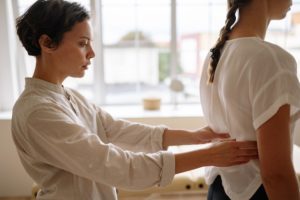 Research shows that there are a countless number of causes behind back pain.[2]
Research shows that there are a countless number of causes behind back pain.[2]
Differential Diagnosis
For this reason, it is important to differentiate whether your back pain is caused by a slipped disc in back or just any other problem.
In other words, you need to get from your medical professional a differential diagnosis.
Usually, your MD, physiotherapist or your clinician will diagnose your lumbar spine condition by:
- Obtaining your personal and medical history
- Listening to your complaints and lumbar herniated disc symptoms
- Applying some bedside special tests
- Requesting imaging such as X-ray, CT scans and more importantly MRI. [5]
But…
There is always a way to tell if your problem is originating from a spinal disc herniation by simply listening to your body.
Paying close attention to every detail of your back pain symptoms can help you detect symptoms of lumbar herniated disc and seek professional support in time before your problem escalates.
Lumbar herniated disc symptoms include:
- Lower Back Pain
When a disc bulges out of its place, it might compress neighbouring structure leading to irritation and inflammation of these structures.
This inflammation releases chemicals that stimulate your pain receptors and make you feel pain around your lower lumbar herniated disc. [2]
For this reason, if you have a lower lumbar herniated disc, you might experience pain and muscle spasm in your lower back.
- Muscle Weakness
If you have had back pain for a while, you might also experience muscle weakness especially in your leg muscles that are supplied by the compressed nerves. [6]
In other words, you may describe this muscle weakness as if your legs were:
- heavy,
- weak,
- difficult to move or
- dragging behind.
You can also consider muscle weakness if your knee frequently gives away or if you need help going up and down stairs.
- Radiculopathy
Research shows that radiculopathy is the fancy medical term to describe pain or pins and needles down your leg. [6]
This type of pain is triggered when a nerve is pinched in your back or anywhere across your leg. [6]
It is true that a herniated lumbar disc is not the only reason for radicular pain, numbness, tingling and abnormal sensation in your leg, but it is still considered the most common cause. [2,6]
What Is Radicular Pain Like?
You might have heard the word “sciatica pain” referring to the leg pain mostly associated with lumbar disc herniation.
This is true.
Research shows that when the sciatic nerve root is compressed, you might experience pain in the back of your thigh, leg and sole of the foot. [6]
But …,
- What if the pain is in the front or the side of your thigh, knee, or the side of your leg?
And…,
- Did you know that neurological symptoms in your leg vary according to the level, size and direction of the lower lumbar herniated disc? [6]
The thing is, sciatic pain is mostly related to a herniated 5th lumbar disc.
And the reason why it is really common is that L5 disc is the most mobile and most prone to herniation among all lumbar discs.
Yet, if another lumbar disc bulges out, let’s say the 2nd, 3rd or 4th disc, you might experience femoralgia (i.e., pain in the front and outer side of your thigh) which is caused by compression of the femoral nerve root rather than the sciatic nerve. [6]
Not sure how to rehab your lower back pain or a herniated disc injury?
For a limited amount of time only.
Jazz will professionally help you with a free consultation to find out whether you qualify to join a life-changing herniated disc rehabilitation programme.
Request your FREE CONSULTATION NOW!
CAUSES of DISC HERNIATION and RISK FACTORS
 There is no single reason behind a herniated lumbar disc, this injury is complex.
There is no single reason behind a herniated lumbar disc, this injury is complex.
But in order to make it easier for you, let’s categorise herniated lumbar disc causes to modifiable and non-modifiable risk factors.
Lumbar Disc Herniation Causes You CANNOT change
These herniated lumbar disc causes are the ones you do not have control over.
For instance:
Your Age
As we age, our cell structure changes, a wear-and-tear process kicks in and the function of our cells and organs are altered.
And intervertebral discs are not an exception; by the passage of time, the disc loses its elasticity, water content and collagen.
The annulus fibrosis (outer layer of the disc) is often weakened, deformed and sometimes broken leading to bulging of the nucleus pulposus (the gel cushion inside disc).
This is just one mechanism by which the disc can irritate neighbouring structures and lead to lumbar herniated disc symptoms. [7]
Your Genetics
Do you think your genes can put you at more disc for developing a lumbar herniated disc?
Although there has been a debate regarding this question, some interesting studies have revealed that your genes cannot be overlooked when it comes to disc herniation risk. [7]
- For instance, a study compared the spine health in identical twins who had different jobs, physical activity, and interests.
- This study found similar levels of disc degeneration; which suggests that genes place a larger influence on disc health than expected. [8]
Another study used MRI to examine the spines of identical twins with a 5-year-gap between examinations to see if the degeneration in their intervertebral discs occurs in similar manners regardless of their different lifestyles.
- Research revealed that genes and environmental factors contributed to 47% to 66% of the spinal changes.
While other factors such as habits, work and training explained only 2% to 10% of the degeneration found in the MRIs. [9]
Do you have a positive family history for disc herniation and back pain?
Protect your discs with laser sharp customised lifestyle changes.
Start retraining your body in a customised manner, improve your muscle tone in the right places, your body posture, strength and your alignment.
CONSULT JAZZ ALESSI NOW !Risk factors you CAN change
Although genes were found important in the speed and nature of the disc generation.
The mechanical, environmental and behavioural factors also affect your spinal health.
The only difference is, unlike genes and aging, these factors are totally under your control. Here are some examples:
Obesity and Your Nutrition
Carrying excess weight overloads your spine and puts more stress on your intervertebral discs.
This is why being overweight can make you more at risk for developing disc herniation. [10]
When your nutrition is not customised to your weight loss, rehab needs and it stimulate your inflammation markers.
This makes both pain levels to go up and your back recovery worst.
Occupation
The nature of your job can be one of the important lumbar disc herniation causes that you need to consider.
Research show this…,
If your job includes standing for prolonged time, carrying heavy objects, sitting for too long or excessive bending and twisting, you might be more at risk of injuring your lumbar spine and developing disc herniation. [7]
Lifestyle
Did you know that your lifestyle affects you from head to toes?
It even affects the health of your spine and can increase your risk of disc bulge.
For instance, if you:
- Sit at a desk and work long hours in the office,
- Lead a sedentary lifestyle,
- Play video games all the time,
- Use your phone a lot, and
- Do not exercise regularly.[7]
Your core muscles will become very weak.
Particularly, your core muscles (and I don’t mean just your 6 pack) that play an important part in helping you:
- Stand tall and maintain a proper posture
- Support your spine in the right way and
- Protect your vertebrae discs.
Weaker muscles interfere with proper body alignment.
This puts a massive extra load on your spine and this may lead to early disc degeneration.
What Are The Effects of Jazz’s Exercise Customisation
Elizabeth Tiffany suffered from a herniated disc located at L5/S1.
This was combined with a bilateral sciatica resulting from the disc bulge, partial nerves denervation and a facet joint effusion.
Pretty bad, right?
This is what Elizabeth said at the end of her back health transformation.
“I’ve never been given exercises before that work both the upper and lower back together so effectively. I’ve noticed that the exercises we were performing on the upper body have changed the structure of my upper back and scapula. I went from not being able to do any push ups, to complete 22 – 24 push ups in a row!! In my personal experience Jazz provides rehab exercises more effective than any physio.”
- Elizabeth Tiffany –
Did you know that they may recommend steroid injections that have ani-inflammatory characteristics and can help relieve your symptoms and improve your condition? [14]
How Is A Diagnosis Made?
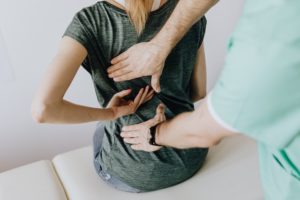 Usually, herniated lumbar disc symptoms have much in common with many other back problems.
Usually, herniated lumbar disc symptoms have much in common with many other back problems.
This is why a thorough and accurate diagnosis is important to find out whether your lower back pain is caused by a herniated disc. [11]
In addition, diagnosing a herniated disc not only does make you sure about your problem, but also puts you on the right path towards a successful treatment so, you can start your back rehabilitation transformation programme.
To diagnose your back pain problem, your clinician will do one or more of the following:
- Medical History
Your clinician will ask you questions that seem basic to you, but don’t be surprised; with these simple questions, professional medical practitioners come to weigh more conclusions than you think.
For instance, your clinician will ask you about the pain, how it feels like and it will even ask you to rate your pain on a scale from 1 to 10.
Research shows that by understanding your back pain will give your MD or physio an idea of how your problems interferes with your daily life activities and help them understand how severe your condition is.[11]
Other assessment questions may include:
- your family history,
- the nature of your job,
- your stress levels,
- how your injury effects your physical, emotional life and your mental focus
- what you do throughout your day and
- what treatments you have tried before you have decided to visit your doctor.
All these questions will help your physician start where they should.
Instead of wasting the time trying treatments that you have tried before.
They will also help them understand the cause of your problem and help you prevent worsening and recurrence. [11]
- Bed-side Examination
No matter whether your clinician is a physician, orthopaedist, neurosurgeon, physiotherapist, chiropractor or an osteopath.
Each of these highly skilled professionals will perform special tests to differentiate your problem from other conditions with similar symptoms (differential diagnosis).
These tests may include visual inspection, assessment of your sensation, reflexes, balance, muscle strength and flexibility etc. [11]
- Imaging
Your clinician may refer you for radiology in order to assess the condition of your spine and tissues.
Usually, MRI is the golden choice in diagnosing a herniated disc.
However, according to your lumbar herniated disc symptoms and what your clinician finds out during your examination, they might recommend other modalities such as plain X-ray, CT scan and nerve conduction study. [11]
WHAT TREATMENTS ARE AVAILABLE IN MEDICINE?
Depending on the site, nature and severity of your symptoms, your clinician may recommend one or more of the following treatments:
- MEDICATIONS
Your doctor may recommend different types of pills and medications to treat your symptoms.
For instance, they may prescribe:
- NSAIDs (non-steroidal anti-inflammatory drugs) to control your inflammation and reduce your pain
- Vitamin B12 to reduce the numbness and help the nerves heal
- Muscle relaxants to reduce your muscle spasm [11], [12], [13]
- CONSERVATIVE TREATMENT
If your pain and symptoms interfere with your daily life activities, your clinician may refer you to a physiotherapist, back rehab personal trainer specialist or a massage therapist where you will be treated with:
- Electro-therapeutic devices,
- Manual therapy
- Therapeutic exercises
- Heat or ice application
- Massage
- Laser sharp customised exercises (these must be assessment based)
This may happen in order to reduce your pain and symptoms; help you avoid surgery and get you ready for your back injury rehabilitation transformation plan. [11]
- PAIN MANAGEMENT
Your clinician may recommend you visit a pain clinic where a pain management specialist may use epidural injections to reduce your pain.
For instance…,
WHAT DOES A HERNIATED LUMBAR DISC FEEL LIKE?
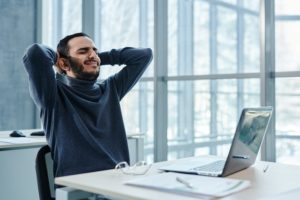 If you have lumbar disc herniation, what you need is not always a pain killer and a bed rest.
If you have lumbar disc herniation, what you need is not always a pain killer and a bed rest.
Even though these two might be important, their importance is only in the beginning when your symptoms are acute and you cannot do much about your pain.
But what you truly need is to find the right customised rehabilitation programme with the personal trainer rehab specialist who understands this injury in details from the inside out and your symptoms.
Herniated disc means your life is greatly affected.
I deeply understand that with pain from a herniated disc, you:
- Can barely stand or walk for a long time,
- Feel years older than your age and becoming isolated
- Cannot carry even lightweight groceries from the car to your doorstep
- Feel frustrated and limited every time your pain holds you back
- Cannot sit for long and your work production is affected by the symptoms
- Are afraid of your condition’s progression
- Wonder all the time about whether you will end up needing surgery
This is how restricting the symptoms might be…
But, it all depends on your expert back rehab personal trainer assessment and approach.
If he understands your condition from the inside out and will relate to your symptoms, he will be able to state your problems and set you the proper rehabilitation plan that will help you improve in no time.
It is only a matter of time until you start:
- Feeling no back tension
- Feeling no pain
- Safely regaining your muscle and body strength
- Restoring your flexibility
- Returning the body functions, you lost
- Regaining your balance and stability
- Boosting your energy levels
- Safely transform your muscle tone and core strength
- Improving your mood and self-esteem.
- Transform your confidence levels.
Are you feeling excited about these successful changes and want to transform your back health using the right customised rehab programme?
Jazz Alessi is London’s number one personal trainer rehab and is specialised in lower back.
If you are ready to start your journey towards a pain-free life.
BOOK A FREE CONSULTATION NOW !BEST EXERCISE FOR LUMBAR HERNIATED DISC
Are you wondering what to expect in a herniated disc rehabilitation programme?
Well, depending on your symptom, your expert personal trainer will set you a plan including a combination of exercises to meet your fitness goals. Your rehabilitation programme may include:
1. Stretching Exercises
If you have a herniated disc, you might be wondering…
Why would a herniated disc make me feel this much stiff?
Well…
- To begin with, pain; when you are in pain, you tend to move less and keep your body as stable as possible to avoid painful movements.
After a while, even if your pain subsides, your joints feel stiff, your muscles are shortened and your tissues are restricted. [11]
- Secondly, inflammation; when you disc bulges out of its place, it irritates surrounding structures and renders them inflamed.
Research shows that this inflammation is associated with tissue swelling and it is proceeded by tissue adhesions and restriction. [15],[16]
That’s why a laser sharp customised nutrition plan helps you to rehab much faster.
- Last but not least, muscle spasm, which also gives you the feeling that you are stiff and cannot move through your body’s full range of movement.
Once your London personal trainer realises that you have these problems, he will create the best customised stretching in your lumbar rehabilitation programme.
Some of the most common stretching exercises in herniated discs might be:
- Back muscle stretching: e.g., knee to chest exercises.
- Hamstring stretches: e.g., toe reaching.
- Calf muscle stretches: e.g., wall push-up stretch.
- Spinal Mobility exercises: e.g., pelvic tilting.
- Nerve flossing and stretching: e.g., sciatic or femoral nerves.
2. Strength Training
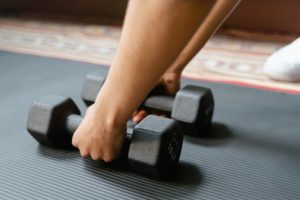 Muscle imbalance is a major contributor to your herniated disc symptoms.
Muscle imbalance is a major contributor to your herniated disc symptoms.
When the muscles in general, and the core muscles in particular, are weak, your body weight is unevenly distributed and feels heavier on spine. [16]
Therefore, if you are not taking immediate action but continue this way.
Your weak muscle will become weaker whilst your strong muscles will become stronger.
This increases your pain levels while it perpetuates and increases your back injury risks.
In your rehab programme, your London personal trainer will assess the strength of your muscles to detect the weak muscles and target strengthening them using some exercises. For instance:
- Core strengthening exercises: e.g., wall planks.
- Pelvic floor exercises
- Strengthening gluteal muscles (buttock and outer thigh muscles)
- Strengthening quadriceps and hamstrings (thigh muscles)
3. Customised Pilates Rehab
If your rehabilitation programme includes customised Pilates training for your specific back condition and you will train with a reputable Pilates trainer, you are all set!
Because this means your back rehab personal trainer customises your transformation plan to the max and it will give you the best benefits in the shortest time possible.[17]
Pilates is considered an all-in-one training that focuses on improving:
- Muscle strength
- Flexibility
- Core stability
- Your body symmetry
- Fitness and endurance
- Reduces muscle tension and pain levels
- Helps you destress
Without putting extra load on your spine or aggravating your symptoms. [17]
4. Customised Yoga Rehab
 Yoga can also be one of your Yoga personal trainer’s best choices, especially if your pain holds you back from doing exercises, or your reputable Yoga teacher thinks that the mechanical or emotional stress you have is worsening your symptoms.
Yoga can also be one of your Yoga personal trainer’s best choices, especially if your pain holds you back from doing exercises, or your reputable Yoga teacher thinks that the mechanical or emotional stress you have is worsening your symptoms.
Basically, customised yoga exercises can help you improve your flexibility, you’re your body to become even, strengthen your core, and relieve anxiety, depression, stress and muscle spasm. [15]
5. Cardio Training Rehab
Aerobic exercises such as walking and swimming are really important and can help you improve your fitness and train your muscles. [17]
In the beginning, walking and jogging might be difficult for you as they may aggravate your pain and tingling.
But with the right gradual rehab programme, your London personal trainer specialist will level you up slowly and safely in order to improve your physical fitness and get you able to walk and run again.
Aerobic exercises help you improve blood supply to your muscles, avoid injury and also lose weight, which helps reduce the load on your spine. [17]
6. Successful Lifestyle Modification
Changing your habits is an important part of your rehabilitation.
In fact, Healthy Living and adopting Healthy Lifestyles can help you:
- Improve your symptoms
- Build your muscles and support your spinal column
- Lose weight and reduce the stress on your spine
- Get rid of anxiety and stress
- Become optimistic and more happy
- Reduce your body inflammation (think customised nutrition)
- Exercise regularly and stay active for good. [15]
Are you excited to get your own programme customised based on your very personal needs and goals?
If yes,
It is time to consult Jazz Alessi, London’s best personal training expert in lumbar back rehab.
Request a FREE CONSULTATION NOW
WHY BACK PAIN CUSTOMISATION IS CRUCIAL?
Back pain rehab is not one size fits all.
For example,
- If you have mechanical back pain, and muscle spasm in your back without disc herniation, it would be useless for you to do nerve flossing exercises, because simply, you have no nerve compression.
But this is not the worst part…
The worst part is, some programmes not only are useless for some cases, but also can be harmful!
- For instance, if you have back pain from spondylolisthesis (i.e., slipped vertebrae) and you decide to do yoga poses without assessing this correctly and consulting your expert Yoga personal trainer, some poses like the cobra pose can actually worsen the slippage in your vertebrae!
- Or imagine having a slipped disc in back that is compressing your sciatic nerve, and you hear that you need to strengthen your core muscles to support your spine.
So, you decide to do crunches and sit-ups.
- Unfortunately, exercises like these can increase the pressure around your herniated disc and can make your disc bulge even worse.
To avoid back reinjury risks and more.
 It is always worth it to look for a professional personal trainer rehab expert who knows exactly what he is doing especially when it comes to training a person with herniated disc lower back.
It is always worth it to look for a professional personal trainer rehab expert who knows exactly what he is doing especially when it comes to training a person with herniated disc lower back.
This is the safer choice.
It saves you time, pain, effort and money and it will help you recover faster without any setbacks.
Using customised herniated disc treatment based on exercises you will be able to do and with minimal to no risk of recurrence your recovery will be shorter and a very happy one.
If you are looking for a successful Back pain customisation tailored for your back pain and symptoms.
Speak to Jazz Alessi.
How Jazz helps You to Rehab and Heal Lumbar Herniated Disc
Out there, there is a countless number of rehab programmes for lower back pain and lumbar disc herniation.
However, only a laser-sharp customised programme will give you the fastest and the most long-lasting results you are looking for.
This is what makes Jazz Alessi different when it comes to disc herniation rehab.
His attention to details makes the programme made to meet your very specific and individual goals without putting you at risk of injury or recurrence.
He works closely with you to help you get rid of your symptoms by setting a comprehensive herniated disc rehabilitation programme based on your:
- complaints,
- medical history,
- doctors’ reports,
- current challenges you have
- specific goals and results you want to successfully achieve.
All the clients who chose to restore their lumbar health using Jazz Alessi customised expertise.
Reported that all their rehabilitation programme has exceeded their expectations and are happy and back in training and some taking up new sports.
 This is because the back transformation programme was specifically made to tackle their problems and achieve their goals.
This is because the back transformation programme was specifically made to tackle their problems and achieve their goals.
In addition, Jazz designs a programme that is easy for you to follow and commit to.
Jazz’s goal is to help you integrate the healthy rehab programme in your lifestyle and make it a long-lasting change.
For this reason, no matter what your life looks like and how busy you are, Jazz will help you fit the change into your day and make health your new style.
This is what Jan stated at the end of his lumbar rehab programme.
“I would recommend Jazz without reservation. I could potentially take up a new sport for example. I built strength and endurance through training and doing way more than I thought possible. His commitment, knowledge and care are surely unsurpassable. These qualities are entirely unique within the field of back care as I have encountered it.”
- Jan –
WHO IS JAZZ ALESSI?
Jazz Alessi is an elite personal trainer and nutrition specialist lecturing at organisations like LSE Athletic Division and Cameron McKenna who believes that your back health comes first.
He knows that there is no one-programme-fits-all for lumbar disc herniation.
This is why Jazz designs a different successful rehab programme for every client based on their own likes, dislikes, lifestyle, job, diagnoses, challenges and symptoms.
He simply makes your programme fun to follow, including exercises that can fit easily in your busiest days and recipes of foods and smoothies that you will definitely enjoy.
References
1- Pubic health England –– Arthritis Research UK –– Musculoskeletal Calculator
https://www.versusarthritis.org/public-health-bulletins/back-pain/london/
2- Yasufumi Hayashi (2004): Classification, Diagnosis, and Treatment of Low Back Pain;
JMAJ 47(5): 227–233, 2004
https://www.med.or.jp/english/pdf/2004_05/227_233.pdf
3- Lyu, FJ., Cui, H., Pan, H. et al. Painful intervertebral disc degeneration and inflammation: from laboratory evidence to clinical interventions. Bone Res 9, 7 (2021). https://doi.org/10.1038/s41413-020-00125-x
https://www.nature.com/articles/s41413-020-00125-x
4- Phil Heler on June 20, 2020: Lower Back Pain is Increasing in Prevalence.
What are the Reasons? https://buxtonosteopathy.co.uk/blog/why-is-the-prevalence-of-lower-back-pain-increasing/
5- Marcelo Gálvez M, Jorge Cordovez M., Cecilia Okuma P., Carlos Montoya M., Takeshi Asahi K (2017): Differential diagnoses for disc herniation
https://www.webcir.org/revistavirtual/articulos/2017/3_agosto/ch/hernia_eng.pdf
6- Dydyk AM, Khan MZ, Singh P. Radicular Back Pain. [Updated 2021 Nov 2]. In: StatPearls [Internet]. Treasure Island (FL): StatPearls Publishing; 2022 Jan-. Available from: https://www.ncbi.nlm.nih.gov/books/NBK546593/
7- Zielinska, N.; Podgórski, M.; Haładaj, R.; Polguj, M.; Olewnik, Ł. Risk Factors of Intervertebral Disc Pathology—A Point of View Formerly and Today—A Review. J. Clin. Med. 2021, 10, 409.
https://doi.org/10.3390/jcm10030409
8- Battié, M.C.; Videman, T.; Kaprio, J.; E Gibbons, L.; Gill, K.; Manninen, H.; Saarela, J.; Peltonen, L. The Twig and functional analysis of the allelic polymorphism indegeneration†. Spine J. 2009, 9, 47–59.
https://www.mdpi.com/2077-0383/10/3/409?type=check_update&version=2
9- Videman, T.; Battié, M.C.; Ripatti, S.; Gill, K.; Manninen, H.; Kaprio, J. Determinants of the progression in lumbar degeneration: A 5-year follow-up study of adult male monozygotic twins. Spine 2006, 31, 671–678.
https://europepmc.org/article/med/18475246
10- Heliövaara, M. Body Height, Obesity, and Risk of Herniated Lumbar Intervertebral Disc. Spine 1987, 12, 469–472.
https://journals.lww.com/spinejournal/Abstract/1987/06000/Body_Height,_Obesity,_and_Risk_of_Herniated_Lumbar.9.aspx
11- North American Spine Society: Evidence Based Clinical Guidelines For Multidisciplinary Spine Care
https://www.spine.org/Research-Clinical-Care/Quality-Improvement/Clinical-Guidelines
12- Schoenfeld, Andrew & Weiner, Bradley. (2010). Treatment of lumbar disc herniation: Evidence-based practice. International journal of general medicine. 3. 209-14. 10.2147/IJGM.S12270.
https://www.researchgate.net/publication/45509075_Treatment_of_lumbar_disc_herniation_Evidence-based_practice
13- Knezevic NN, Mandalia S, Raasch J, Knezevic I, Candido KD. Treatment of chronic low back pain – new approaches on the horizon. J Pain Res. 2017 May 10;10:1111-1123. doi: 10.2147/JPR.S132769. PMID: 28546769; PMCID: PMC5436786.
https://www.ncbi.nlm.nih.gov/pmc/articles/PMC5436786/
14- Cohen SP, Bicket MC, Jamison D, Wilkinson I, Rathmell JP. Epidural steroids: a comprehensive, evidence-based review. Reg Anesth Pain Med. 2013 May-Jun;38(3):175-200. doi: 10.1097/AAP.0b013e31828ea086. PMID: 23598728.
https://pubmed.ncbi.nlm.nih.gov/23598728/
15- Kasnakova, Petya & Mihaylova, Anna & Petleshkova, Penka. (2018). Comprehensive rehabilitation of herniated disc in the lumbar section of the spine. Biomedical Research. 29. 10.4066/biomedicalresearch.29-18-874.
https://www.researchgate.net/publication/327443348_Comprehensive_rehabilitation_of_herniated_disc_in_the_lumbar_section_of_the_spine
16- Vangelder LH, Hoogenboom BJ, Vaughn DW. A phased rehabilitation protocol for athletes with lumbar intervertebral disc herniation. Int J Sports Phys Ther. 2013 Aug;8(4):482-516. PMID: 24175134; PMCID: PMC3812831.
https://www.ncbi.nlm.nih.gov/pmc/articles/PMC3812831/
17- Moon, Ji-Hyun & Park, Seung-Jin & Shin, Yun-A. (2019). The Effects of the Use of Pilates Equipment during Pilates Hundred, Swimming Exercise on the Muscle Activation of Abdominal Muscles, Lumbar Erector Spinae, Gluteus of Lumbar Disc Disease Patients. Exercise Science. 28. 41-48. 10.15857/ksep.2019.28.1.41.
https://www.researchgate.net/publication/331668404_The_Effects_of_the_Use_of_Pilates_Equipment_during_Pilates_Hundred_Swimming_Exercise_on_the_Muscle_Activation_of_Abdominal_Muscles_Lumbar_Erector_Spinae_Gluteus_of_Lumbar_Disc_Disease_Patients



